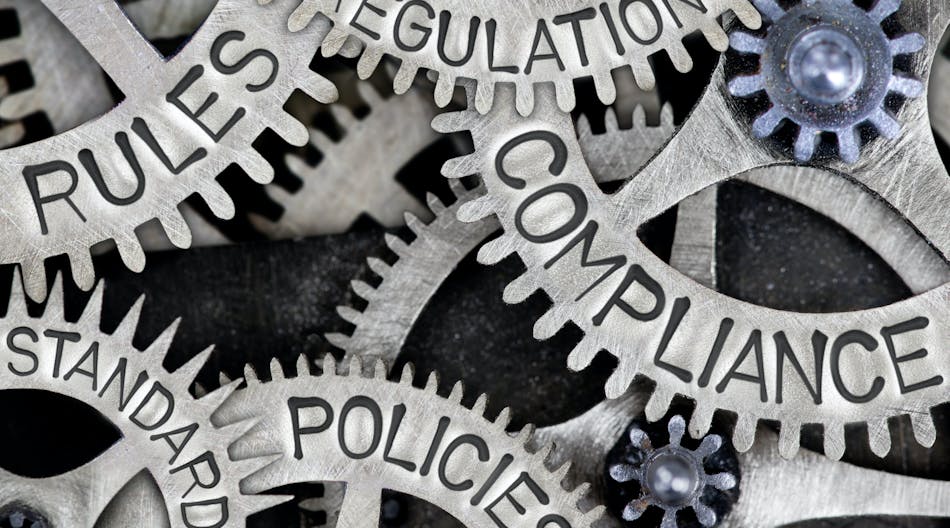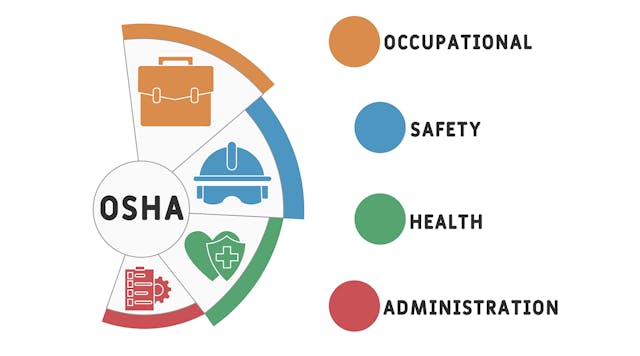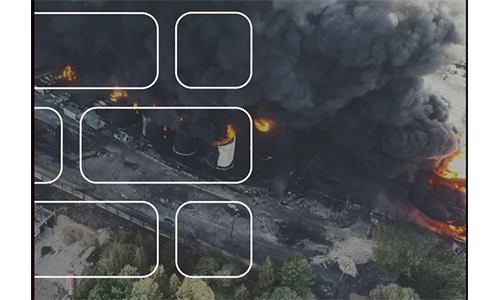Before the end of last year, federal agencies were required by law to publish their regulatory and policy agendas for 2024, and those agendas reinforce the fact that they will continue pursuing much the same course they have since the outset of the Biden administration in 2021.
A common thread woven through all of the federal agencies’ agendas is their commitment to the promotion of unionization of the nation’s workforce, which includes the various agencies and commissions working together to advance that cause.
When it comes to the prospects for the Department of Labor’s agenda for 2024, don’t expect to see any slackening of its efforts in that regard, although the DOL currently lacks a formally approved cabinet-level chief. President Biden’s nominee for Secretary of Labor, Julie Su, continues to serve as Acting Secretary because she could not overcome public controversy to garner enough Democratic votes in the Senate to be formally confirmed.
Biden suffered a similar—although lower-level—setback earlier when he could not get former Obama official David Weil confirmed to head the DOL’s Wage and Hour Division (WHD).
In DOL’s 2024 agenda (released in December 2023), its goals were stated plainly: “To create and sustain good jobs, the department has focused rulemaking on worker health and safety, fair wages, and supporting unions and workers who are organizing unions.” DOL also says it is advancing equity and supporting marginalized communities by creating rules that protect workers who are so defined from discrimination.
The WHD intends to issue a final rule in April regarding overtime pay rules. This includes updates to the executive, administrative and professional exemption for the Fair Labor Standards Act (FLSA), called the White Collar exemption. This includes tinkering with the definitions of supervisory activities to further limit the number of staff exempt from minimum wage laws.
This includes updating the overtime minimum salary threshold from $684 per week ($35,568 annually for a full-year worker) to $1,059 per week ($55,068 annually for a full-year worker). DOL intends to raise the salary threshold for highly compensated employees from $107,432 annually to $143,988 annually.
The changes include automatic increases to all minimum wage salary thresholds that will be adopted every three years as part of an effort to maintain wage levels DOL says are needed to “ensure that middle-class jobs pay middle-class wages, extending important overtime pay protections to millions of workers and raising their pay.”
As part of the administration-wide pro-unionization campaign, DOL pledged to work closely with other federal agencies to deal with the controversial joint employer issue. DOL can also be expected to support the National Labor Relations Board's (NLRB) recent actions. The joint employer issue is important to unions seeking to organize franchise operations, such as McDonald’s restaurants.
WHD also plans to finalize regulations to clarify the distinctions between employees and independent contractors under the FLSA. This remains a top issue for unions. Weil, Obama's WHD chief, once declared that there are no such things as independent contractors, only misclassified employees, something Hillary Clinton repeated when she ran for president.
Last October, DOL proposed revisions to its own independent contractor standards, and it issued the final rule in January, creating public consternation among some members of the business community, including the American Trucking Associations. But the rule’s ultimate impact on independent contractor status in various industries depends largely on how DOL will choose to enforce it.
Other actions slated to take place in 2024 include further revisions and updates to department policies and regulations dealing with multi-employer and single-employer pension funds. Some are now in the pre-final rule stage and are focused on:
- improving participant engagement and effectiveness of ERISA retirement plan disclosures;
- pooled employer plans management;
- emergency savings supervision of individual account plans; and
- plan reporting for retirement savings lost and found.
DOL’s Employment and Training Administration (ETA) has proposed regulations to ensure that H-2B visa programs promote worker protections for these immigrants. This will be part of implementation of the White House's H-2B Worker Protection Taskforce goals, which were announced Oct. 19. Also involved are the Department of Homeland Security (DHS), the State Department and the Agency for International Development.
In November, DOL announced its support for a DHS plan to increase the number of H-2B non-immigrant visas issued up to 64,716 for the entirety of Fiscal Year 2024, including up to 20,000 reserved for citizens of Guatemala, El Salvador, Honduras, Haiti, Colombia, Ecuador and Costa Rica.
OSHA Enters the Fray
In addition, DOL announced its commitment to improve working conditions for H-2B workers further by taking steps to protect their safety through actions that will be undertaken by perhaps its best-known division—the Occupational Safety and Health Administration (OSHA).
OSHA will propose a new infectious diseases rulemaking to protect employees in healthcare and other high-risk environments from exposure to and transmission of persistent and new infectious diseases. These are said to range from ancient scourges, such as tuberculosis, to newer threats such as Severe Acute Respiratory Syndrome (SARS) and COVID-19.
In January 2024, OSHA proposed updates to an existing standard and expanded safety and health protections for emergency responders, including firefighters, emergency medical service providers and technical search and rescue workers. The changes will apply to the standard originally adopted in 1980.
Currently, OSHA regulations protecting emergency responders’ safety and health is a patchwork of decades-old, hazard-specific standards, the agency explained. “Not designed as comprehensive emergency response standards, they fail to address the full range of job hazards faced by today's emergency responders,” OSHA said.
The newly named “Emergency Response” standard updates safety and health protections and will be in line with national consensus standards for a broad range of workers exposed to hazards that arise during and after fires and other emergencies. It will include major changes for protective clothing and equipment and significant improvements in safety and health practices that the industry generally accepts as standard procedures, OSHA said.
OSHA also is in the process of completing small business consultations required by law as part of the next step in finalizing a rulemaking on heat illness prevention. (As part of the Administrative Procedures Act, Congress required federal agencies to conduct a small business impact study before issuing a final rule, along with environmental impact studies in some cases.)
In the pre-rule stage of development are new rules intended to deal with process safety management, the prevention of major chemical accidents and an update to the agency’s mechanical power presses standards. Other proceedings in development will address the prevention of workplace violence in healthcare and social assistance, and the establishment of a blood lead level for medical removal.
Also awaiting issuance of a final rule are amendments to the cranes and derricks in the construction standard and changes to requirements regarding communication tower safety, emergency response; a Lock-Out/Tag-Out update; welding in construction confined spaces; and revisions to the agency’s tree care standard.
Other changes awaiting finalization include:
- walking-working surfaces;
- personal protective equipment in construction;
- a powered industrial trucks design standard update;
- changes to the worker walkaround representative designation process to allow employees to designate outsiders, such as union representatives in non-union worksite;
- reduction of occupational exposure to crystalline silica; and
- revisions to medical surveillance provisions for medical removal protection.
You can expect OSHA’s enforcement staff to remain busy as well, especially when it comes to targeting employers in industry segments under pressure to unionize. It’s no secret that OSHA has been cracking down on Amazon and Starbucks, two prominent companies that are confronting drawn-out union organizing campaigns. In 2023, OSHA upped the ante for the union-targeted Amazon by leveling charges against its distribution facilities about the company’s medical response to workplace injuries. Unable to show the company’s facilities were not responding when a worker was injured, the agency now alleges those medical responses are inadequate in detail, degree or amount.
Last summer, OSHA launched a three-year National Emphasis Program (NEP) permitting extensive inspections of warehousing and distribution center operations, mail/postal processing and distribution centers, parcel delivery/courier services, and certain retail establishments designated as being “high-hazard.” OSHA said it is looking for hazards related to powered industrial vehicle operations, material handling and storage, walking and working surfaces, means of egress, and fire protection. (Another NEP announced last May targeted slips and falls in the construction industry.)
In recent years, the agency has initiated other NEPs and Regional Emphasis Programs (REPs) as well. Although it may not happen in an election year, don’t be surprised if OSHA announces similar efforts during 2024.
In October, the agency signed a Memorandum of Understanding (MOU) agreement with the NLRB promising to work together to promote union growth. Under the agreement, OSHA will provide what it perceives as potential victims of alleged unfair labor practices with the NLRB’s contact information and how to obtain information about their rights under federal labor law. OSHA also will advise employees who may want to file time-barred official complaints that they can still file an unfair labor charge with the NLRB for an additional six months.
For its part, the NLRB will share information with OSHA regarding workers it believes are currently or likely exposed to health or safety hazards or have been subjected to suspected violations of OSHA regulations, as well as encouraging those workers to contact OSHA promptly.
Further, the MOU provides opportunities for the NLRB and OSHA to conduct coordinated investigations and inspections “in appropriate cases and to the extent allowable under law.” In cases where there are overlapping statutory violations at issue, the agencies agree to “explore and confer” regarding what enforcement actions are appropriate for each agency to undertake.
EEOC Embraces DEI
The Equal Opportunity Employment Commission (EEOC) has reached an unusual point in its decades-long history: The success of its core mission in improving the consciousness of employers regarding racial, ethnic and gender discrimination has now reached a place where it has been adopted as a management practice throughout corporate America.
The embrace of diversity, equity and inclusion (DEI) policies by employers throughout the country (and indeed internationally as well) shows that the concept and the principles driving it have achieved widespread acceptance. That doesn’t mean the commission hasn’t stayed busy pursuing its agenda. According to its Strategic Enforcement Plan for fiscal years 2024-28, which was released Dec. 6, the EEOC will continue to hew to this same path. The commission has been out of the headlines in recent years, but that was because prior to last July’s confirmation of Democrat Kalpana Kotagal as a member, the commissioners had been deadlocked, divided evenly between two Republicans and two Democrats.
The current EEOC action with the biggest direct impact on almost all employers is the requirement that they file the EEO-1 Component Form with the commission. That process began when the commission opened its website to receive those filings from employers, which were due by Dec. 5 and no later than Jan. 9.
In the EEO-1 Component Form, employers are expected to supply the commission with detailed pay data organized by multiple pay levels and job description categories for women, racial and ethnic minorities, and disabled employees. It is possible that the EEOC will extend the deadline if it does not receive enough responses—something that it has done in the past.
This controversial reporting requirement was originally imposed during the Obama administration, underwent court challenges, was withdrawn during the Trump administration and then re-imposed after Biden became president.
Although the EEOC has asserted that the information collected from employers will only be used for research and in development of generalized policy positions, employers expressed concern that it could be used to target individual companies for future enforcement actions and eventually will be made publicly available on the Internet.
Late last year, the commission also opened a proceeding to gather public comments on a proposed guidance for employers dealing with issues arising from one of the most controversial topics in contemporary American life—transgenderism. Among the issues tackled in it are gender identity epithets, use of a name or pronoun inconsistent with someone’s gender identity (misgendering), harassment because an individual does not act in a manner associated with their gender, and denying access to facilities due to gender identity.
The guidance also seeks input from the public on how far employers should go in monitoring social media in an effort to ensure employees are not engaging in discrimination and sexual harassment on the employer’s physical premises.
In addition, employers should ready themselves to deal with EEOC’s increased attention to complaints arising from charges of discrimination on the basis of religion, an issue the commission intends to focus on more. Sentiments stirred up by recent wars, conflicts and other geo-political events may also be reflected in the mix of complaints the EEOC receives.
David Sparkman is founding editor of ACWI Advance and contributing editor to EHS Today.















































































